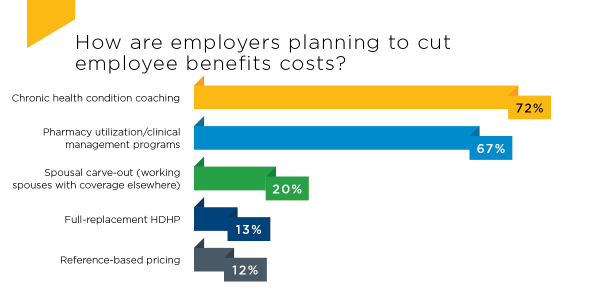Nearly 96% of respondents acknowledge the role of competitive benefits for talent acquisition.

KANSAS CITY, Mo., April 17, 2019 — Earlier this year Lockton conducted a national survey of more than 1,300 US clients and prospects to gain insights on current and potential benefits-related strategies and trends. The results are in and a summary of survey findings (opens a new window) is now available. Respondents provided insights into common and progressive employee benefits strategies, as well as their expected adoption over the next plan year.
While employers understand the role of their employee benefits in attracting and retaining talent, survey responses revealed that the single most important factor for organizations when making benefits decisions is cost reduction. The challenge for employers is to carefully balance their need to offer desirable benefits with their need to manage costs, and ensure they are providing the highest perceived value for their benefits budget.
Developing a competitive plan at a low cost is both an art and a science. Survey responses show employers are using a variety of tactics to balance the need for competitive benefits while still trying to manage costs.
Even though choice drives higher costs, 83% of respondents offer a choice of plans with the majority (76%) including a traditional plan (PPO, HMO) option. Choice is expected to increase in the next plan year including the choice of traditional plans. Only 13% of employers are offering full-replacement high-deductible plans.
While implementation is still low, 2% of respondents are currently utilizing reference-based pricing for targeted services and an additional 10% are considering it in the future. Employers have been quick to offer convenient access to doctors with telemedicine (84%).
Only 50% of employers offer a well-being program. Conversely, a majority of respondents offer disease management services (73%) and just over half offer chronic condition coaching (58%).
Employers are more willing to push their employees further to control pharmacy costs. This is evident in the high prevalence of utilization management programs (58%) and requiring specialty medicine only be obtained by a specialty pharmacy (42%).
About 50% of the employers surveyed are expanding coverage to new eligibility groups like domestic partners, rather than limiting coverage through dependent eligibility audits (33%) or spousal carve-out for working spouses with coverage elsewhere (9%). The latter appear to be trending for next year with dependent eligibility audits growing to 57% and spousal carve-out to 20%.

The survey also exposed some areas that employers could improve upon. Effectively navigating the healthcare system can lead to major cost savings but fewer than one-fifth of employers provide advocacy, navigation or transparency tools to support this. Employers offer traditional voluntary benefits like accident insurance (58%) but benefits to support families such as caregiver support for childcare services haven’t been widely adopted (11%).
Find more insights from the 2019 Lockton benefits survey in the executive summary (opens a new window).

